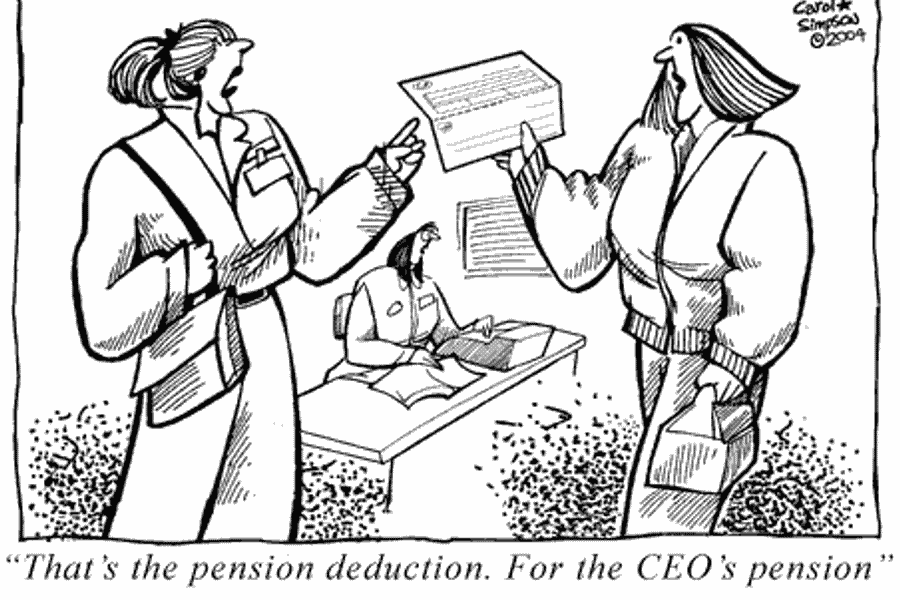
While millions of Americans worry about making ends meet from day to day, many probably don’t even want to think about tomorrow; their retirement nest eggs are shrinking fast, or already shattered.
In the wake of the latest stock-market implosion, 401(k) values have plummeted, showing how quickly a Wall Street meltdown can wipe out retirement dreams.
But the recent havoc shadows more troubling long-term trends. Old-fashioned defined-benefit pensions, with guaranteed payouts, continue to lose ground to 401(k)-type programs in the private sector. In recent years, some troubled companies have suspended their 401(k) contributions. Some collapsing corporate giants, like United Airlines, have abandoned their old pension plans and left workers in the lurch.
The road to retirement, meanwhile, is potholed with job losses, spiking healthcare costs, and cratering mortgages.
The Economist even speculated that retirement as we know it may soon be a thing of the past, as people live longer and opt to keep working through what was formerly known as old age.
But for now, the forecast for workers’ autumn years remains gloomy. Progressive groups have pitched various ideas for fixing the system, ranging from reforming the social security tax to creating a nationwide retirement plan with guaranteed returns for the rest of a worker’s life.
The main idea is getting back to basics: know what you put in, and know what you’ll get out in the end.
A recent report from the U.S. Government Accountability Office compares U.S. private pensions with retirement programs in Britain, Switzerland and the Netherlands. Those countries cover the vast majority of workers with retirement programs that are jointly managed by employees and employers.
Switzerland and the Netherlands regulate investments to shield retirees from excessive financial risks. Switzerland and Britain also make accommodations for lower-income workers to help them contribute toward their retirement without undermining their current budgets.
The Center for American Progress designed a retirement program modeled on old-school public sector defined-benefit pensions. Among the key features:
- Broad-based coverage, which covers all workers automatically.
- Portability of benefits, which will allow workers to retain benefits if they switch jobs.
- Shared financing, with contributions from both employees and employers.
- Lifetime benefits, so that retirement income cannot be outlived.
- Spousal and disability benefits to provide protections against death or the inability to work.
Retirement USA, the brainchild of the Economic Policy Institute, SEIU and other organizations, lays out a similar plan for universal, guaranteed retirement income for workers and their families that would complement Social Security. Payments would be reserved for retirement, and the system would be governed by trustee boards with representation from employers, workers and retirees.
As pensions go into free-fall for a generation of Americans, could retirement reform play into a more radical economic shift?
At the Socialist Project, labor scholar Sam Gindin of York University in Toronto says that the global recession offers a platform for challenging status quo labor policies, but activists have treated the retirement crisis too passively:
Rather than building on the discrediting of the private sector’s ability to meet social needs and moving the arguement for a universal public pension, unions and workers have themselves absorbed the erosion of private pensions, accepting dramatic cutbacks including the exclusion of future workers. And faced with inferior pensions or no pensions at all, workers are increasingly themselves ‘choosing’ to solve the problem individually through, in the U.S., cashing in their 401(k) plans… in order to pay for health insurance when unemployment took that away or, in both the U.S. and Canada, working past 65. By letting business off the hook in this way, this has essentially eased the pressures for reform, made business all the more confident in its demands, and left public sector workers increasingly isolated and vulnerable to seeing their pensions cut as well.
In addition to holding employers accountable, Gindin writes, workers should develop their own alternative, labor-centered retirement program. The broader discussion for the movement, in his view, is how employees can seize control of the balance between work and leisure time, and “eliminate the power private finance has over our lives.”
While the most fervent labor struggles revolve around wages and the workplace, a more subtle tension surrounds the post-work experience.
Retirement isn’t just the end of the daily grind. It is, at the very least, something to look forward to after a lifetime of toil, and at best, a hard-earned entitlement that lets people realize there’s more to life than just a job.
Michelle Chen is a contributing writer at In These Times and The Nation, a contributing editor at Dissent and a co-producer of the “Belabored” podcast. She studies history at the CUNY Graduate Center. She tweets at @meeshellchen.








